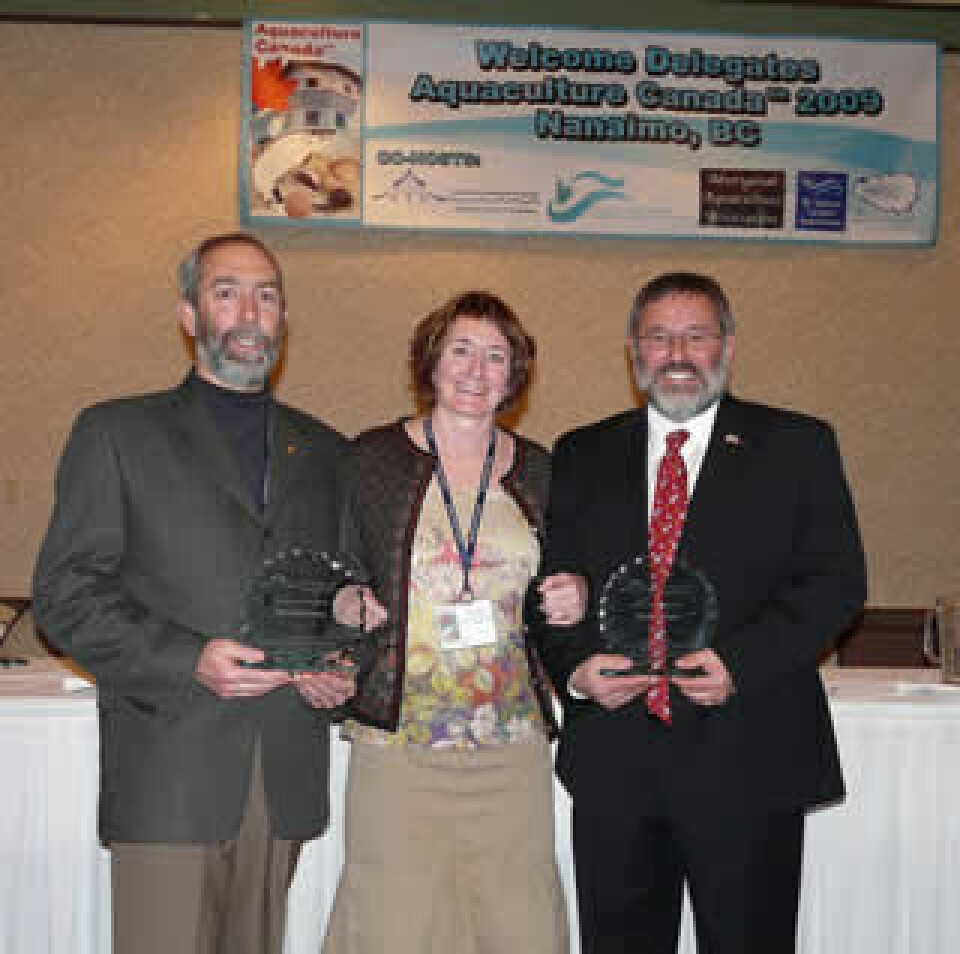
Work continues on award-winning Canadian aquaculture initiative
Odd Grydeland As reported earlier in FishfarmingXpert, a team of Canadian researchers from both the East and West Coasts of Canada are experimenting with the production of multiple species of seafood at individual sites- for the benefit of both the operator’s bottom line as well as the environment in the immediate vicinity of the aquaculture site. Here are some excerpts from a recent report by the New Brunswick Business Journal;
Thierry Chopin, a marine biologist at the University of New Brunswick in Saint John, is working on mimicking the natural ocean environment in fish pens through a practice called Integrated Multi-Trophic Aquaculture. By adding seaweeds and mussels to a fish pen, he has shown that some potentially harmful nutrients in vicinity of the aquaculture site, as well as their wastes, are consumed. Thierry Chopin, the Scientific Director of the Canadian Integrated Multi-Trophic Aquaculture Network (CIMTAN), was one of the three honourees at the R3 (Research, Results, Recognition) Gala of the New Brunswick Innovation Foundation last week in Fredericton. "What we are doing is recapturing these nutrients that would be lost," Chopin says. "Also we're diversifying the aquaculture industry."
He is now experimenting with adding bottom-dwelling creatures, such as sea urchins, sea cucumbers and worms, to consume the solid nutrients that fall past the mussels - seaweeds only consume dissolved nutrients. "At the present time we are still working on what is the threshold between the different components of aquaculture to make it a balanced system," he says.Since the ocean floor needs some of the nutrients, "The big question is how much do you want to remove," he says. By adding multiple new species Chopin sees potential to develop markets for selling them as food for humans in the coming years. But the approach also has other revenue generating possibilities further down the road.
Blacks Harbour-based Cooke Aquaculture Inc., a partner in Chopin's research providing test farms on the Bay of Fundy, likes the potential the studies could bring down the road such as nutrient and carbon trading credits. "It's an interesting concept," says company spokeswoman Nell Halse of the nutrient trading idea. "It makes good sense."
But it's the approaches Chopin already has that have economic benefits - such as adding seaweeds and mussels to fish farms - that Cooke Aquaculture is most excited about. "The whole approach is very well received by the environmental community," says Halse. "It's a public resource. People care, so we're under a lot of scrutiny as an industry and as a company."Because the approach improves the company's reputation and diversifies its products through sustainable means, she says it's going to be a "big part" of the future, though not every farm will necessarily adopt it because it may not make sense for some sites. "We really manage the whole value chain from the egg right to the plate, to diversity products is just the next step," she says. Finding new markets for the products is the challenge, which Cooke Aquaculture has started to successfully address.






















































